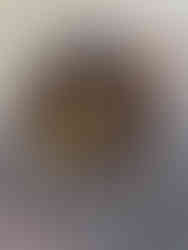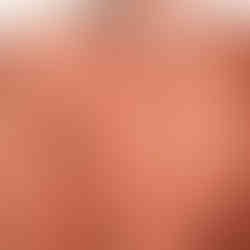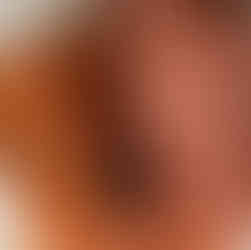Loquat Dye
- annacarolynmeier
- Apr 1, 2021
- 4 min read

Loquat or Eriobotrya japonica is a flowering tree from the rose family that originates from China, and has naturalized in many mild and warm climates around the world, including here in Northern California where I live. Like other fruit trees from the rose family such as peach, plum, quince, cherry, and apple, it’s leaves and wood produce wonderful colors in the dye pot. Loquat trees grow large leathery dark green leaves and bear clusters of small globe shaped fruit with a similar taste to its stone fruit relatives, but with a rather large stone and not much flesh. At least here in California, I’ve observed that very few people actually eat the fruit. As a kid I used to forage for loquats in the park, or street medians, but even I, a die-hard fruit lover, have to admit that when it comes to eating loquat it is a fair amount of work for very little reward. There are over 800 cultivars of loquat, some more tasty than others, and the tree has been cultivated in Asia for over a thousand years for both the fruit and the leaves, which are used to make a medicinal tea.

Loquat is thought to have been brought to California by Chinese and Japanese immigrants during the gold rush. It is commonly used as an ornamental in gardens, and as street trees. I’m growing my own loquat from a seedling I rescued but it isn’t big enough to produce dye yet, instead I wait for someone in my neighborhood to prune their loquat and then scoop up the trimmings for the dye pot.
I’ve dyed with loquat leaves many times over the past few years and each time I learn something new. The first couple of times I dyed with loquat I got strong coral pinks on cellulose fibers and strong oranges on protein fibers. Over the course of a few months I dyed hundreds of silk ribbons for my wedding in 2019 and got a range of peach tones using different loquat baths, and exhausting each one to get a range of tones. I found over time that the colors were very lightfast on protein fibers, but it do fade on cellulose fibers. I dyed a cotton sweatshirt that had a soy milk binder on it, initially the color was a bright coral but over the years and many washings the color faded to muted rose color. The dye does contain natural tannins so it isn't fugitive, but it's not as colorfast as other more reliable natural dyes. I've re-dyed several loquat pieces over the years, and I love the way the color builds up in layers.
I was very happy with the lovely peach tones I kept getting, until I made a loquat bath for a workshop. The day of the workshop we dyed with the loquat bath and got lovely peaches and light pinks as I expected. A few days later I reheated the bath again and forgot about it for a really long time ( a happy accident in this case), when I used the bath a second time I was shocked to see the yarn we were using turn a gorgeous russet red. I had no idea that the color could go that deep, I just hadn’t been heating or oxidizing the bath for long enough. I had a similar discovery with avocado pits, and have heard others on Instagram relate similar experiences. The more I heated the dye and then let it sit and then reheated it, the stronger the red pigment became.


The amount of leaves and the health of the tree also matters. I made a loquat bath for a workshop once but the tree I collected from was suffering from drought and I didn’t want to take too many leaves. I used far less leaf material than I normally would as a result and even with a long heating time I could never get good color from the batch. I find that cutting up the leaves into smaller pieces (They can get really large and leathery) and cramming as much material in the dye pot as possible (with room for water and stirring of course) yields the best results. I also like to use leaves from trees that look happy. Loquat is adapted to moist highland conditions, here in drought prone California and with the high heat in the summers here in the Central Valley I like to harvest from trees that have been regularly watered or I harvest in the winter wet season.

My most recent batch of Loquat was harvested in February after a neighbor cut down their loquat tree. With so much material at my fingertips I decided to separate the leaves from the branches to see if there was a difference in the colors. I happened to collect a lot of dye material that week, so I cut up the leaves and branches into small pieces put them in buckets, covered the material with water and let it soak until I was ready to extract the dye. Soaking the material isn’t strictly necessary but I do think it helps break down the lignin in the leaves and bark, and makes it easier for the dye to extract when the material is heated. After a few weeks of soaking, the leaves yielded a clear yellowish/pink liquid, and the branches made a thick orange liquid. I heated the leaves to barely simmering for several hours each day over the course of three or four days, letting the bath cool in between. Once the dye was a thick red color I strained out the leaves and dyed the samples, heating on low heat for a few hours and then letting the fabric cool in the bath for two days.

I used an almost identical method for the bark, although I did use slightly higher heat. I then added iron scrap to each bath (transferring them first to an iron-approved pot) and heated until the liquid turned purple/grey.

I love the range of colors I got from just one plant and I love how subtly the colors are different from the branches and the leaves. It’s enough to be noticeable, but they also blend together really beautifully. I love dyeing with loquat and even though it’s not very washfast on cellulose fibers, I’ll still continue to use it, and see each piece as a living and evolving color story.




























Thanks for the information. Very helpful. I just got the deep russet red color after 3 days of simmering over a wood stove.
Hi Claire, I haven’t tried with the seeds or the skins yet. If you give it a shot let me know how it goes, I’d love to hear about the results!
i have a loquat tree and usually make jam with the fruits, but like you said not a lot of flesh to seed!! Have you tried dyeing with the seeds or skins?? i can’t wait to try dying with the leaves and branches!!